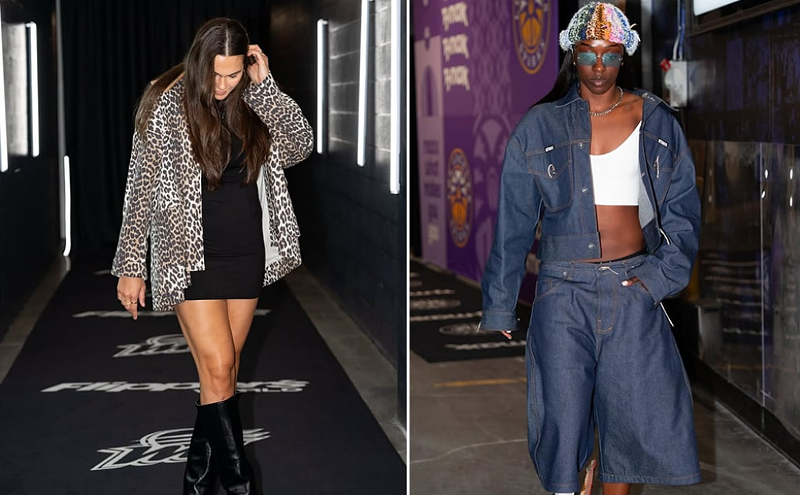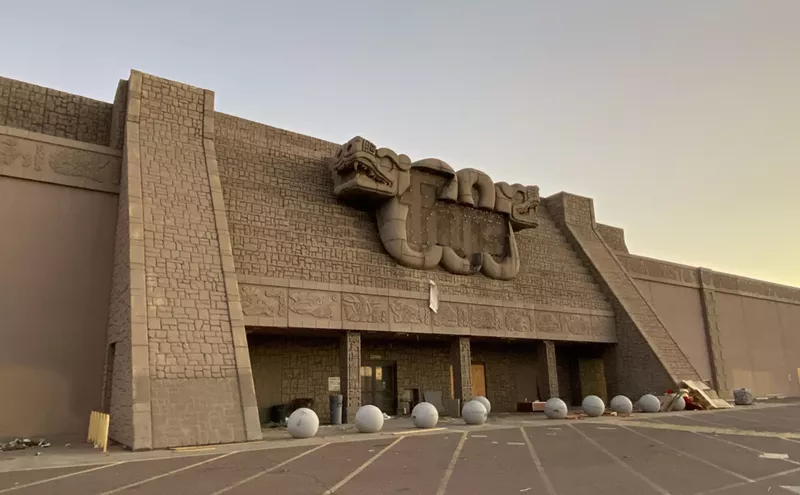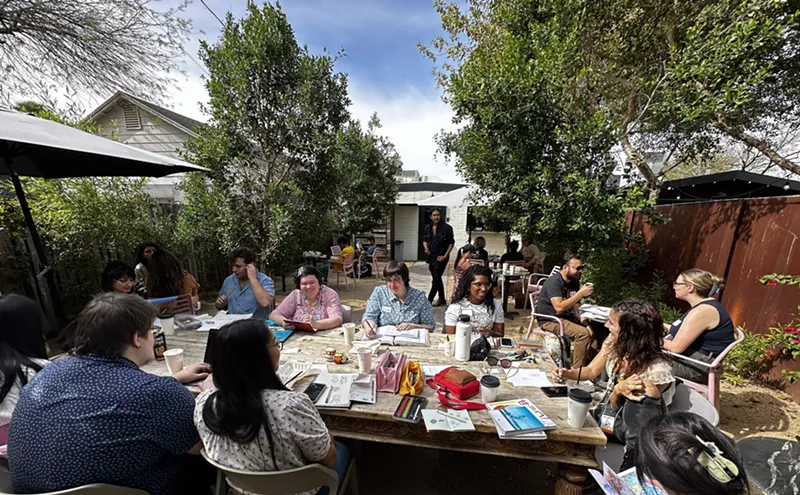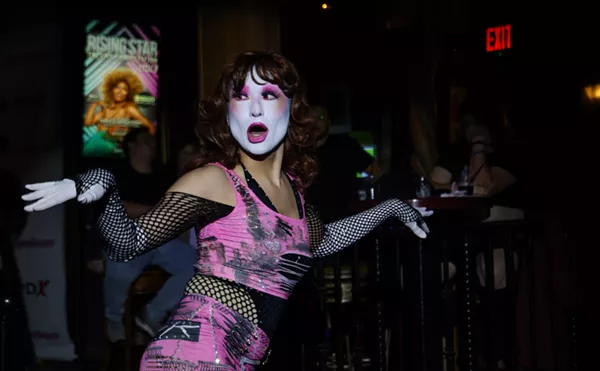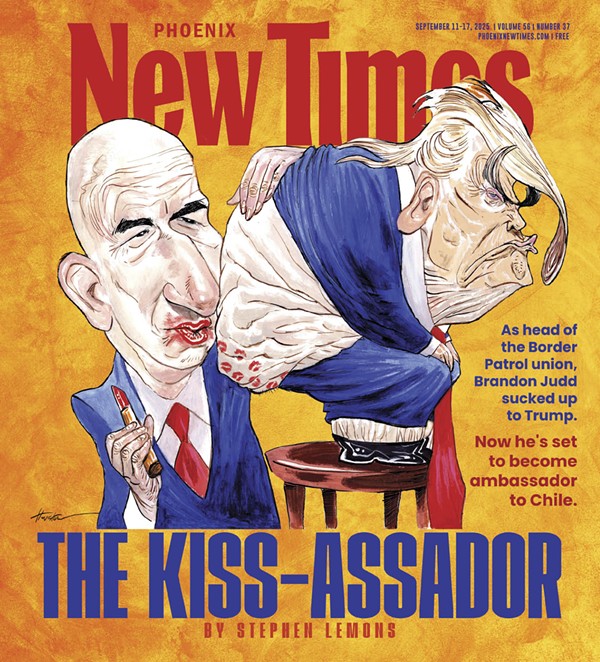"Our focus for this particular show, no pun intended, was on alterative photographic processes and imagery," says Robert Schultz, visual arts director at Mesa Arts Center, home to Galeria Mesa. "The quality of the submissions was so outstanding that only after a very long process was the field finally narrowed down."
Dedicated primarily to the work of emerging artists, Galeria Mesa put out the call for entries last fall by sending announcements of the competition to more than 800 universities, colleges and galleries, by placing ads in Artnews and at Mesa Arts Center's Internet address, and by mailing notices of the competition to more than 2,000 individual artists all around the country. James Hajicek, professor of photography at Arizona State University's School of Artand former director of North Light Gallery, patiently sifted and resifted through 527 nationwide responses, eventually choosing 41 pieces by 22 artists from 14 states. Seven artists from Arizona made the final cut.
For the most part, the artists in this show have shunned the classicism of the straight black-and-white, silver-gelatin print, which has been held in almost reverential awe by both photographers and the public for a good chunk of this century. Flouting photographic convention, they've opted for more contemporary techniques, often successfully straddling the once gaping chasm between plain photographic representation and other disciplines, such as painting and sculpture. And, as the title indicates, figurative subject matter in a variety of incarnations pretty much rules "Image Conscious."
"Iduzkia, Itzala, Atabala (Light, Shadow, Rhythm)" by Basque artist Marie-Jose Durquet of Baltimore, Maryland, is a good example of the melding of painting and photographic imagery currently in vogue. Panels of delicately tinted prints of shadowy breasts and hands are juxtaposed with silvery-toned, photo-realistic paintings of undulating tree branches. Which images are painted and which are photographic can only be determined by close inspection, an illusionistic ruse of the artist used to suck the viewer into intimate contact with her work.
Photographs cast in the guise of painting also appear in work by Aimee Bott of Muncie, Indiana. In "Crumbling Archetype," Bott gives birth to a hazy, half-obliterated female figure with arms flung heavenward against the backdrop of a chalkboard on which a Greek column has been crudely drawn. By scratching, sanding, painting and generally abusing both negative and print, the artist creates a sense of frenzied motion and eerie presence from her selectively tortured silver prints, which are framed by wide, brushed stainless-steel borders that have been similarly tormented.
Using a positive-to-positive technique, Marianne Magne of Venice, California, also incorporates scratching and drawing in two haunting, untitled Cibachrome pieces. These vaguely disturbing, richly textured images suggest faces peeled back to reveal tissue, blood and sinew. Simultaneously repellent and attractive, Magne's images are some of the strongest in the show.
Kristin Holcomb of Brooklyn, New York, uses light-sensitive photo emulsion applied directly to large-scale canvases to effect photographic "paintings." Holcomb has printed, then hand-tinted, the canvas surface, achieving a deceptive, painterly quality for her abstracted image of an overturned boat and a surreal landscape featuring pointy topiary flanking a weathered stone urn.
Taking the two-dimensional into the third dimension is the goal of other works in "Image Conscious," like "I Foreign I" by Michael Webb of Santa Fe, New Mexico. Jagged slices of thick acrylic imprinted with the image of a woman staring holes into the viewer are stacked haphazardly atop each other. The discomfiting female face becomes three-dimensional as one moves from dead center of the piece. "Oil Can" and "Spring Loaded Zinc Compressor" by Jeff Kaufman of Minneapolis, Minnesota, combine rusty, yet oddly glittering, industrial elements with photographs that echo and visually fuse with these mechanical components. And Jeff Schmuki of Phoenix goes completely three-dimensional in "Eleven Years" by implanting old photographic portrait and sheet-music imagery into the glaze of four misshapen clay vessels toned to mimic the ravages of time.
Tempe's Brent Bond grapples with the eternal tugof-war pitting dispassionate science and reason against seductive baroque aesthetics and blind faith in "Confused Christian"; in this mixed-media assemblage piece, see-through, black-and-white film positives of worshipers in interior Roman Catholic church scenes are layered over wood panels slathered with gold-flecked wax. Nestled smack in the center of this religious iconography is a pair of rusty calipers resting on sky-blue fabric in a garishly gilded frame, a textbook 18th-century symbol for scientific enlightenment.
Earthly cynicism and the metaphysical need for ritual do battle in Bond's "The Unanswered Question," in which cheap, synthetic blue-velvet curtains part to reveal a photographic depiction of ornate church arches. Jutting from this altar niche is a silver, shell-shaped collection plate brimming with crumpled dollar bills and change.
In the same vein, Tim S. Guthrie of Moscow, Idaho, enshrines Polaroid transfers of his friends, which are presented as rustic icons and paired with strange amuletic objects like small Christmas-tree lights, hunks of broken plastic, electronic components and coffee beans. These latter-day, postmodern "saints" are offered by the artist "as yet another alternative in an endless variety of options for adoration and idolization." Rick Lloyd of Phoenix proceeds one step further in the Polaroid-transfer process in "Auto-Tensile" and "Le Voyeur," in which he has literally floated translucent photographic emulsion from a number of images over one another.
While substance is often touted as being superior to form in the art arena, this quiet little show tucked away in the heart of Mesa is evidence that, occasionally, form in and of itself can supply substance. Allinall, "Image Conscious" is a nice cross-section ofthe type of complex, thoughtful photographic work that's being produced in this era of instant gratification when even a Polaroid just doesn't seem fast enough.
"Image Conscious" continues through Saturday, March 16, at Galeria Mesa inside Mesa Arts Center, 155 North Center. For more details, see Art Exhibits listing in Thrills.



